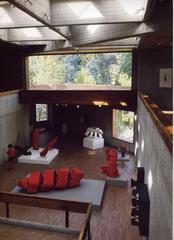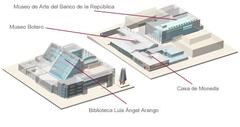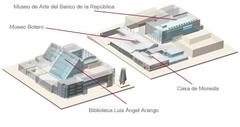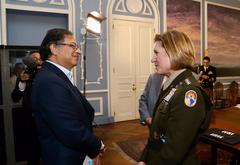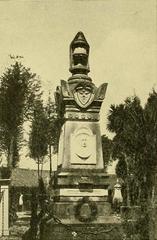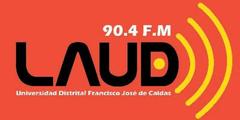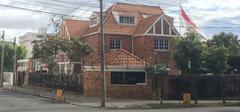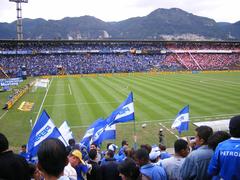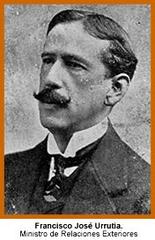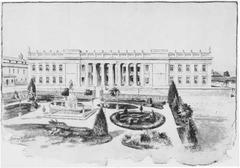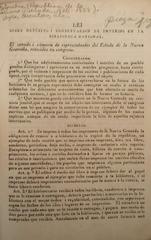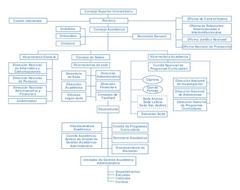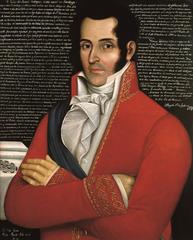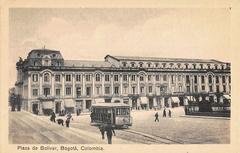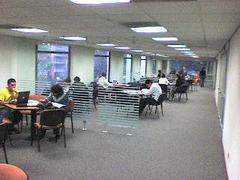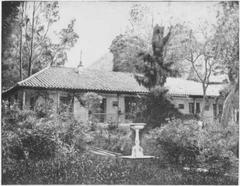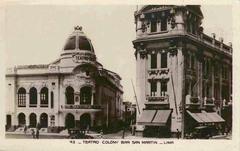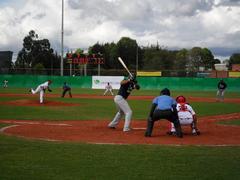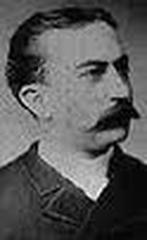Primatial Cathedral of Bogotá: Visiting Hours, Tickets, and Historical Sites Guide
Date: 14/06/2025
Introduction
The Primatial Cathedral of Bogotá—formally the Santa Iglesia Catedral Primada Basílica Metropolitana de la Inmaculada Concepción—stands as one of Colombia’s most significant landmarks, embodying nearly five centuries of history and faith. Established soon after Bogotá’s founding in 1538, the cathedral has been at the spiritual and cultural heart of the city, witnessing its evolution from a colonial outpost to a modern capital (Lonely Planet). Showcasing distinguished Neoclassical architecture by Spanish architect Fray Domingo de Petrés, it remains a testament to Colombia’s artistic legacy and serves as a living monument of the nation’s religious heritage (Catedral Primada de Bogotá; MexicoHistorico.com).
Located on Plaza de Bolívar in the historic La Candelaria district, the cathedral is surrounded by other prominent sites, making it an essential stop for history enthusiasts, architecture admirers, and spiritual seekers alike (Evendo; hellotravel.com). This guide covers everything you need to know for your visit, from practical information on hours and tickets to the cathedral’s historical and cultural context.
Contents
- Early Foundations and Colonial Beginnings
- Architectural Evolution and Neoclassical Transformation
- Restoration and Artistic Heritage
- Cultural and Religious Significance
- Notable Events and Historical Milestones
- Visiting Hours, Tickets, and Guided Tours
- Key Interior Attractions
- Cultural Events and Community Engagement
- Accessibility and Visitor Amenities
- Practical Tips for Visitors
- Exploring the Surrounding Area
- Visuals and Interactive Elements
- Frequently Asked Questions (FAQ)
- Summary and Recommendations
- References
Early Foundations and Colonial Beginnings
The cathedral’s site is intimately linked to Bogotá’s origins. After the city’s founding by Gonzalo Jiménez de Quesada in 1538, the first Mass was reportedly celebrated near Plaza de Bolívar, establishing the area as a religious center (Lonely Planet). The initial thatched chapel was soon replaced by larger structures, reflecting the growing importance of the city and the Catholic faith. Over subsequent centuries, the cathedral underwent several reconstructions due to structural failures and the city’s expansion (Catedral Primada de Bogotá).
Architectural Evolution and Neoclassical Transformation
The cathedral’s architectural journey is marked by both adversity and innovation. After an earthquake in 1785 severely damaged the existing church, rebuilding commenced under the supervision of Domingo Esquiaqui, eventually giving way to Fray Domingo de Petrés’s Neoclassical vision in the early 19th century. Characterized by symmetry, classical orders, and restrained ornamentation, the design set a new standard for Colombian architecture (Lonely Planet). Despite Petrés’s death in 1811, Nicolás León completed the project, and the cathedral was consecrated in 1823 (Goparoo).
Restoration and Artistic Heritage
Throughout the 19th and 20th centuries, the cathedral saw numerous enhancements, including neogothic stained-glass windows, Italian-crafted altar tabernacles, and the addition of a ciborium. Major repairs followed a series of earthquakes, most notably in 1827, and the 20th century brought extensive restoration of the façade and towers under architect Alfredo Rodríguez Orgaz. Declared a National Monument in 1975, ongoing preservation efforts ensure its survival for future generations (Catedral Primada de Bogotá).
Cultural and Religious Significance
As the seat of the Archbishop of Bogotá, the cathedral represents the pinnacle of Colombian Catholicism. Its chapels and altars are home to important relics, such as the tomb of founder Gonzalo Jiménez de Quesada, and are adorned with religious art spanning centuries (Lonely Planet). The cathedral is central to national religious celebrations and major civic events, reinforcing its role as both a spiritual sanctuary and a symbol of national identity (MexicoHistorico.com).
Notable Events and Historical Milestones
The cathedral’s history mirrors Colombia’s own, from the colonial era through independence and into the modern age. It has withstood earthquakes, political upheaval, and even the Bogotazo riots of 1948. The cathedral’s status as a National Monument and its recognition as a Primate Cathedral and Basilica by papal decree underscore its enduring importance (Catedral Primada de Bogotá).
Visiting Hours, Tickets, and Guided Tours
- Visiting Hours: Most commonly, the cathedral is open daily from 8:00 or 9:00 AM to 6:00 or 7:00 PM. Hours may be reduced on religious holidays or during special events. Always confirm via the official site before your visit.
- Admission: Entry is free, though donations are appreciated. Guided tours—available in multiple languages—offer deeper insights for a small fee.
- Guided Tours: Local operators and the cathedral itself provide tours focusing on history, architecture, and art. Specialized tours are available for art and religious studies (mexicohistorico.com).
- Accessibility: The cathedral is wheelchair accessible, with ramps and facilities to support visitors with mobility needs (mexicohistorico.com).
Key Interior Attractions
- Main Altar and Nave: The grand Neoclassical altar and spacious nave create an inspiring atmosphere.
- Chapels: Notable chapels include those dedicated to Saint Elizabeth of Hungary, the Immaculate Conception, and San José, each with artistic and historical significance.
- Tabernacle Chapel: Renowned for its ornate Baroque style (minube.net).
- Art and Relics: The cathedral houses colonial and republican-era paintings, sculptures, and sacred artifacts.
Cultural Events and Community Engagement
The cathedral is an active site for major religious festivals, concerts, and exhibitions. Events such as the Feast of the Immaculate Conception and Holy Week draw thousands of participants. The cathedral also supports community programs, educational workshops, and cultural outreach, reinforcing its role as a living institution (mexicohistorico.com).
Accessibility and Visitor Amenities
- Facilities: Ramps, elevators, and clear signage assist visitors with disabilities.
- Restrooms and Seating: Available within the complex.
- Gift Shop: Offers religious artifacts and souvenirs that support local artisans and preservation efforts.
- Safety: The cathedral is in a well-patrolled area, but standard precautions with valuables are advised.
Practical Tips for Visitors
- Dress Modestly: Shoulders and knees should be covered.
- Photography: Allowed without flash; restrictions may apply during services.
- Best Time to Visit: Early mornings or late afternoons on weekdays for a quieter experience.
- Language: Tours in English and other languages are available on request.
- Nearby Attractions: The cathedral’s central location provides access to the Gold Museum, Capitolio Nacional, Casa del Florero, and the vibrant La Candelaria district (getyourguide.com).
Exploring the Surrounding Area
After visiting the cathedral, enjoy a stroll through Plaza de Bolívar, sample local cuisine in nearby cafés, or visit museums such as the Museo de Arte Moderno de Bogotá and Casa de Moneda. Guided city tours departing from the area include highlights like Monserrate and the Bogotá Botanical Garden (hellotravel.com).
Visuals and Interactive Elements
Explore high-resolution images and virtual tours on the cathedral’s official website and trusted travel platforms to appreciate architectural details and plan your visit. Interactive maps are also available to guide exploration of surrounding historical sites.
Frequently Asked Questions (FAQ)
Q: What are the cathedral’s visiting hours?
A: Generally, 8:00 or 9:00 AM to 6:00 or 7:00 PM daily; check for updates during holidays.
Q: Is admission free?
A: Yes, general entry is free; some tours or exhibitions may require a ticket.
Q: Are guided tours available in English?
A: Yes, upon request.
Q: Is the cathedral accessible for visitors with disabilities?
A: Yes, with ramps and facilities for mobility challenges.
Q: Can I take photographs inside?
A: Non-flash photography is allowed; restrictions may apply during services.
Q: What other attractions are nearby?
A: The Gold Museum, Capitolio Nacional, Casa del Florero, Museo de Arte Moderno de Bogotá, and La Candelaria district.
Summary and Recommendations
The Primatial Cathedral of Bogotá is a cornerstone of Colombia’s spiritual and cultural landscape. Its architectural grandeur, artistic treasures, and central role in national history make it a must-visit site (Lonely Planet; mexicohistorico.com; Evendo). Whether attending a Mass, touring its chapels, or exploring the surrounding historic district, visitors will find their experience both enriching and memorable.
For the most up-to-date information on hours, tours, and special events, consult official resources or download the Audiala mobile app for guided audio tours and insider tips. Make your visit to the Primatial Cathedral of Bogotá a centerpiece of your Colombian journey.


